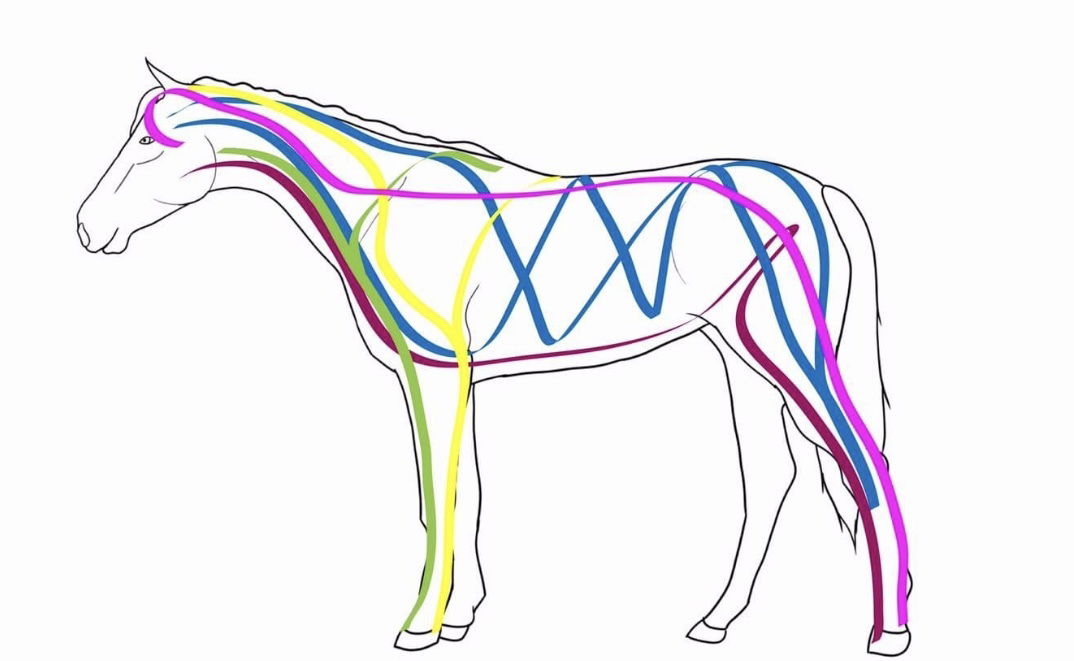20/09/2023
Fascia linier / Tension Lines
People have known about tension/fascia lines in people for many years and several techniques have been developed in how to loosen these. This knowledge has been transferred to horses by the three Danish veterinarians Rikke M. Schulz, Tove Due and Vibeke S. Elbrønd. Which now means, that we can identify dysfunctions in the tension lines and thus resolve these in horses. When we look at the horse as a whole, it is obvious to include the fascia (connective tissue), as this organ connects everything in the body. In addition, the fascia plays a very large role for the horse's biomechanics, as it has many more nerve endings than e.g. muscles, Eleven tension lines have been identified in horses, many of which work together, for example as antagonists. It is therefore important, when working on a certain tension line, that you simultaneously include the associated tension lines. Tension lines are strings of connective tissue that run in different places in the body and connect, for example, the jaw with the back. One or more of these bars may have built up a contraction/tension, thereby affecting the mobility of the horse's body. In addition, many tension lines are also connected to muscles, bones, internal organs and other connective tissue, therefore we place great emphasis on also loosening related muscles and connective tissue with massage and using Cranio-Sacral Therapy to examine bonesplacement in cases, where the tension lines have had an impact on these. Since tension lines have such a large influence on the body's movement and well-being, by analyzing these you can loosen a lot and thus also change how the horse moves. One must therefore pay attention to the fact that in individual cases, where an examination of the tension lines leads to a change in the horse's motor skills, a "retraining period" may be necessary. Here we are mainly talking about reprogramming of the proprio. After introducing this form of treatment into our practice, we have really seen a big difference. This is definitely a game changer in equine therapy and seems to be "the missing link". So, for example, if you have a horse with recurring problems or where the normal forms of therapy no longer make much of a difference, it may very well be the tension lines that are the cause of the dysfunctions. It is individual for each horse whether a short or longer course of treatment with loosening of tension lines is needed. This of course depends on how much needs to be loosened and how long the problem has been going on. When loosening the tension lines, it is important to point out that you cannot always "just" loosen a line and then all is well. Massage and craniosacral are often added to get the best result and sometimes it can take several treatments to get a lasting effect. HOWEVER it's all worth it in the end, as you then have a horse that feels significantly better both physically and mentally, and for us riders a much more flexible horse.
